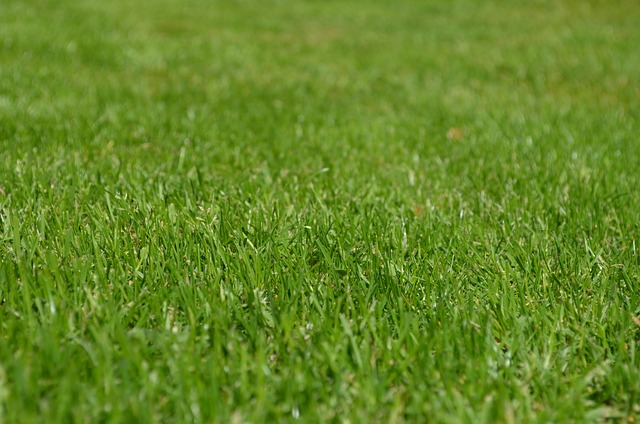Yard Waste Removal and Recycling is a powerful strategy to manage green waste, including grass clippings, leaves, and branches, offering significant environmental, economic, and social benefits. Effective programs prevent environmental degradation by reducing landfill waste and greenhouse gas emissions, fostering a circular economy through compost creation and biofuel production. Communities benefit from lower carbon footprints, enhanced environments, and potentially reduced green space maintenance costs. Success depends on structured systems for efficient collection and recycling, robust infrastructure, resident engagement through education and incentives, and advanced technologies like anaerobic digestion. Global examples, such as Sweden's comprehensive practices and California's innovative initiatives, highlight the vast potential of Yard Waste Removal and Recycling programs worldwide.
Green waste recycling programs are transforming the way we manage organic materials, offering a sustainable solution for yard waste removal. This comprehensive guide explores the importance of recycling green waste, its environmental benefits, and practical steps towards effective implementation. From understanding the scope of yard waste to engaging communities and embracing innovative technologies, discover how these programs are reshaping urban landscapes globally. Learn about successful case studies and unlock the secrets to efficient green waste collection systems for a more sustainable future.
- Understanding Green Waste: What It Is and Why Recycling Matters
- Benefits of Implementing Yard Waste Recycling Programs
- Key Components for Effective Green Waste Collection Systems
- Best Practices for Community Engagement in Recycling Efforts
- Technologies and Innovations Driving Sustainable Yard Waste Management
- Case Studies: Successful Green Waste Recycling Programs Around the Globe
Understanding Green Waste: What It Is and Why Recycling Matters

Green waste, often referred to as yard waste, comprises organic materials such as grass clippings, leaves, branches, and other plant matter typically generated from gardening and landscaping activities. This waste is a valuable resource that, if not properly managed, can contribute to environmental issues like soil degradation and greenhouse gas emissions due to its slow decomposition in landfills.
Recycling green waste through programs focused on yard waste removal and recycling offers numerous benefits. It enables the diversion of organic material from landfills, reducing the environmental impact associated with landfilling. Additionally, recycled green waste can be transformed into nutrient-rich compost or biofuel, contributing to a more sustainable circular economy. By participating in these programs, communities not only reduce their carbon footprint but also foster a healthier environment and potentially lower maintenance costs for green spaces.
Benefits of Implementing Yard Waste Recycling Programs

Implementing yard waste removal and recycling programs offers numerous environmental, economic, and social benefits. One of the primary advantages is the significant reduction in landfill waste. Yard trimmings and organic debris, when improperly disposed of, contribute to the rapid filling of landfills, which not only creates a finite resource issue but also leads to methane gas emissions as these materials decompose anaerobically. By encouraging residents to participate in yard waste recycling, municipalities can divert substantial volumes of organic material from landfills, thereby reducing greenhouse gas emissions and conserving space for other types of waste disposal.
Moreover, yard waste recycling programs foster a circular economy by transforming organic byproducts into valuable resources. Composting collected materials creates nutrient-rich soil amendments that enhance local agricultural productivity and support sustainable gardening practices. This process not only reduces the demand for synthetic fertilizers but also provides a cost-effective alternative for gardeners and farmers. Furthermore, these programs can stimulate local job creation in waste management, composting, and recycling sectors, contributing to economic growth while promoting environmental stewardship among residents.
Key Components for Effective Green Waste Collection Systems

Green waste recycling programs rely on several key components for their effectiveness in promoting sustainable yard waste removal and recycling practices. One of the most important aspects is having a well-designed collection system that allows for efficient separation of organic materials from other types of waste at the source, such as residential or commercial properties. This can include providing clear guidelines and educational resources to residents on what constitutes green waste, like food scraps, garden trimmings, and leaves, ensuring proper sorting at the point of generation.
Additionally, partnerships between local governments, waste management companies, and recycling facilities are crucial for establishing efficient collection routes and processing methods. Adequate infrastructure, including dedicated bins or containers for green waste, is essential to facilitate regular and timely collections. Effective communication strategies that keep residents informed about collection schedules and any specific requirements enhance participation rates, ultimately contributing to the success of the program.
Best Practices for Community Engagement in Recycling Efforts

Effective community engagement is key to successful green waste recycling programs. Start by educating residents on the benefits of yard waste removal and recycling, emphasizing how it reduces landfill contributions, conserves natural resources, and fosters a sustainable environment. Utilize various communication channels like local newspapers, social media, and community meetings to spread awareness and provide clear instructions on proper recycling practices. Encourage participation through incentives such as discounts on recycling services or community events promoting eco-friendly living.
Incorporate easy-to-follow guidelines for residents, ensuring they know what materials are recyclable, collection schedules, and any specific preparation requirements. Collaborate with local schools to integrate recycling education into curriculums, fostering a sense of environmental responsibility among younger generations. Regularly monitor and assess the program’s progress, gathering feedback from residents to make informed adjustments and continuously improve community engagement efforts for enhanced recycling outcomes.
Technologies and Innovations Driving Sustainable Yard Waste Management

Advanced technologies and innovations are revolutionizing sustainable yard waste management, offering efficient solutions for what was once considered a challenging problem—yard waste removal and recycling. One prominent method involves the use of specialized machinery that collects, grinds, and compacts organic materials, transforming them into valuable resources like compost or bio-fuel. These machines streamline the process, reducing manual labor and increasing the volume of waste processed.
Additionally, innovative biological techniques are being employed to decompose yard waste naturally. Anaerobic digestion, for instance, utilizes specific bacteria to break down organic matter in the absence of oxygen, producing biogas that can be harnessed as a renewable energy source. This not only diverts waste from landfills but also contributes to a circular economy by creating usable products and energy from what was once considered garbage.
Case Studies: Successful Green Waste Recycling Programs Around the Globe

Around the globe, various communities have successfully implemented green waste recycling programs, demonstrating the widespread potential for sustainable yard waste removal and recycling. For instance, in Sweden, comprehensive waste management practices have led to nearly all organic waste being recycled or composted, significantly reducing landfill usage. The city of Stockholm’s program involves door-to-door collection of organic waste from homes, which is then processed at large-scale composting facilities.
Another inspiring example comes from California, where innovative programs like those in San Francisco and Los Angeles have transformed the way yard waste is managed. These cities have adopted advanced technologies to turn green waste into valuable resources. For example, San Francisco’s program converts organic material into biofuel and compost, while Los Angeles has implemented a large-scale recycling facility that transforms yard clippings into renewable energy, further reducing dependency on fossil fuels in the process. Such case studies highlight the achievements and best practices that can guide other communities in their efforts to establish effective green waste recycling programs.
Green waste recycling programs, with their multifaceted benefits, are a game-changer in sustainable yard waste management. By understanding the value of green waste and implementing effective collection systems, communities can significantly reduce environmental impact. Engaging residents through best practices and leveraging innovative technologies ensures successful outcomes. These global case studies demonstrate that, in today’s digital era, efficient yard waste removal and recycling are not just possible but essential for a greener future.



